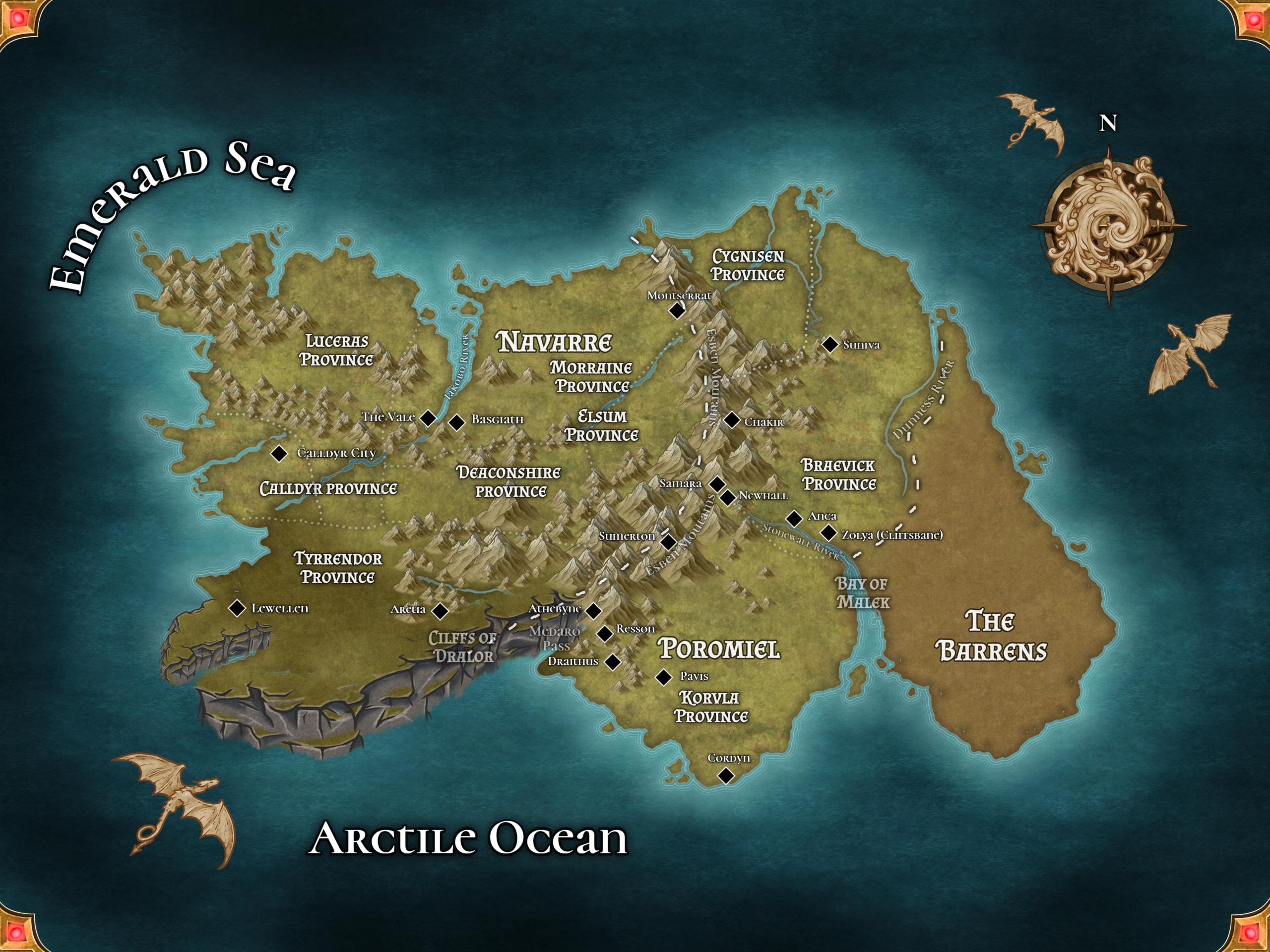Title: Navigating the World of “Fourth Wing”: A Guide to Understanding the Maps and Their Mystique
When you’re deep into the pages of a book, the characters, the plot, and the settings often come alive in your mind in ways that a simple map might struggle to capture. But then there’s a book like “Fourth Wing”—a story so intricately woven into a fantastical universe that the map becomes not just a supplement, but a character in its own right.
If you’re anything like me, diving into the lore of any book world isn’t complete without a visual guide. And for those who’ve ventured into the world of Fourth Wing, you’ve probably noticed the obsession with maps. There’s something about tracing the edges of a fictional continent, pondering the significance of each landmark, and imagining yourself standing at a parapet overlooking the vast expanse.
So, let’s talk about it. Because, let’s be honest, maps in books are the ultimate way to immerse yourself in a fictional world—they’re the key to truly understanding the distances, the politics, and the relationships that shape the narrative. Let’s take a deep dive into the map of Fourth Wing and figure out what makes it more than just a geographical tool, but a vital part of the storytelling experience.
The Map: Not Just Lines and Borders
When I first stumbled upon the Fourth Wing map, I’ll admit I was a little overwhelmed. There were names I couldn’t pronounce, strange geographical features I couldn’t wrap my head around, and mysterious locations that beckoned but didn’t yet make sense. But that’s the beauty of maps in fantasy—they’re meant to evoke a sense of mystery, to give the reader a piece of the world, without giving away everything.
The Fourth Wing map is just like the book itself: layered and complex, with a few unexpected twists thrown in. You have your basic landmarks—mountains, rivers, cities—but as you look closer, you realize there are regions that hold far more significance than just their geographical placement.
Take, for example, Navarre. The map of Navarre in Fourth Wing is central to understanding both the political and emotional tension in the narrative. It’s not just a place—it’s a symbol of struggle, alliances, and in some cases, betrayal. The characters’ journeys are as much about navigating these physical spaces as they are about confronting the deeper challenges within themselves.
But the real magic happens when you zoom in on the Parapet, one of the most talked-about features in the Fourth Wing map. Where is it located? What’s its significance? These aren’t just questions for the map. They’re questions that tease out the inner turmoil of the protagonists. The Parapet is a boundary, a threshold, that once crossed, changes everything. It’s almost like the book itself: once you’re immersed, there’s no turning back.
Maps Aren’t Just for Showing Locations – They Show Us Power Dynamics
At first glance, the map of Fourth Wing might seem like just a collection of places and spaces, but when you start breaking down the political geography, it’s clear that these locations hold far more than just their geographical value. The capital, for instance, isn’t just where the action takes place; it’s also where control is exerted.
The closer you get to the capital, the more powerful the characters are. The farther you move from it, the more isolated and vulnerable they become. This power dynamic is mapped perfectly on the Fourth Wing map, where certain regions are closer to key players—and in some cases, the conflict is rooted in the physical space between the main players and their rivals.
Let’s talk about the Parapet again. For me, it’s the symbolic center of the entire map. It’s not just a location—it represents the threshold between safety and danger, between knowing and not knowing, between peace and war. Understanding its position on the map helps you understand the stakes of the narrative. If you’re still not sure where it is, let me tell you: it’s crucial. It’s the place where everything unravels, and once you know its location, the entire story takes on a new level of intensity.
The Continent of Fourth Wing: A World to Explore
There’s something so exciting about getting your hands on a map of a fictional continent. It’s like being handed the blueprint of a new world, and Fourth Wing’s map is no exception. Whether you’re studying the terrain, or wondering about the historical significance of certain locations, the map gives you clues about the world before the characters even speak.
Take a look at the mountains in the top left corner of the map. At first, they seem innocuous, maybe just a natural feature that exists because every map has to have mountains. But when you dive deeper into the narrative, those mountains take on new meaning. They represent barriers, both literal and metaphorical. As the characters travel through the land, those mountains become a representation of their own personal growth—the highs and the lows they have to climb in order to find out who they truly are.
There’s also the river that cuts through the middle of the map. Rivers in fantasy novels are often symbolic of journeys—they divide lands, they flow with secrets, and they challenge the characters to cross them, to face their fears. In Fourth Wing, this river is no different. It’s a crossroad where decisions are made, and allegiances are tested. Understanding its place on the map gives you a deeper appreciation of the character arcs and the tension that builds as they approach it.
The Importance of the “Fourth Wing Map PDF”
You might be thinking, “Why does it matter if I have a map? I can just picture it in my head, right?” And sure, you can. But maps, especially ones like the Fourth Wing map PDF, offer a level of clarity and immersion that you can’t get from just imagining the landscape. There’s something about having a tangible representation of the world that helps you keep track of where everyone is and why it matters.
Having access to a map PDF also allows you to zoom in, study specific locations, and connect the dots between places that seem disconnected at first. It’s one thing to read about a location; it’s another to see it laid out in front of you, with all the intricacies of its design. The Fourth Wing PDF allows you to make those connections between what’s happening in the plot and the places where it’s taking place.
Plus, let’s face it, it’s fun to study a map in detail. It’s like a mini scavenger hunt for the book nerd in all of us.
Wrapping It Up: The Power of Maps in Fantasy Worlds
The map of Fourth Wing isn’t just a geographical tool—it’s a storytelling device. It represents the struggles of the characters, the shifting power dynamics, and the personal growth that happens as they journey across the continent. When you zoom in on a map like this, you’re not just looking at landmasses—you’re looking at a world built on conflict, love, and the quest for power.
And every time you glance at that Fourth Wing map, remember: it’s more than just lines and borders. It’s a map of human experience—tangled in allegiances, crossed by rivers of fate, and shaped by the mountains we must climb.
So, whether you’re a die-hard fan who has memorized every inch of the map, or a newbie just starting to explore the world of Fourth Wing, take a moment to appreciate how much these maps shape the journey. After all, in the world of fantasy, the maps aren’t just locations—they’re the roads we travel, both in the story and within ourselves.
10 External Links to Keep Your Exploration Going:
- Download the Fourth Wing Map PDF
- Detailed Guide to the Fourth Wing Continent
- What the Parapet Symbolizes in Fourth Wing
- Political Geography of Fourth Wing: A Breakdown
- The Best Fantasy Maps in Literature
- Fantasy Maps: How They Enhance Worldbuilding
- Understanding Fantasy World Geography
- Navarre Region in Fourth Wing: A Deeper Look
- Fourth Wing Lore and History
- The Art of Fantasy Cartography
Now go ahead and explore! Happy reading, map lovers.


